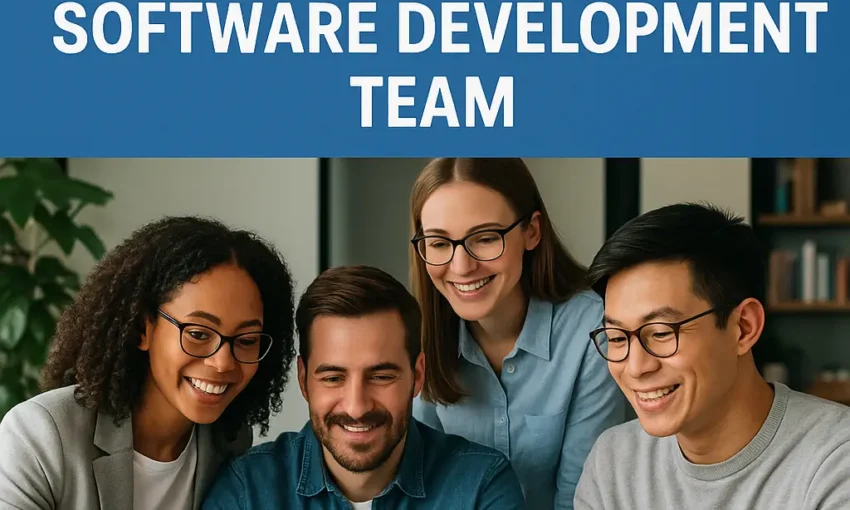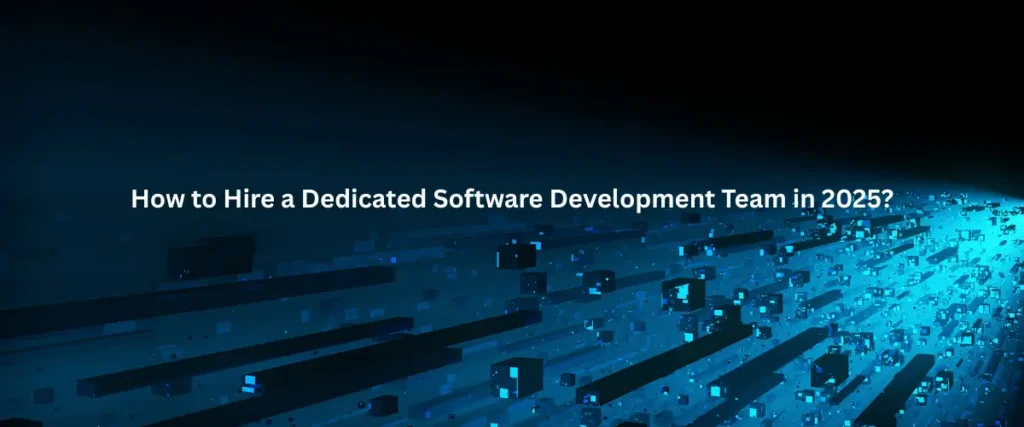How to Hire a Dedicated Software Development Team in 2025?

Introduction
In today’s rapidly evolving technological landscape, hiring the right dedicated software development team can make or break your project. As we navigate through 2025, the competition for top tech talent remains fierce, while digital transformation initiatives continue to accelerate across industries. Whether you’re a startup looking to build your first product or an enterprise seeking specialized expertise, this guide will walk you through 10 easy steps to assemble the perfect development team for your needs.
At Avientech, we’ve helped numerous businesses build and integrate dedicated development teams that deliver exceptional results. Let’s dive into how you can do the same in 2025.
Why Hire a Dedicated Software Development Team?
Before exploring the steps, let’s understand why hiring a dedicated team might be the right approach:
- Cost-effectiveness: Lower overhead compared to in-house hiring
- Scalability: Easily adjust team size based on project needs
- Access to global talent: Tap into specialized skills wherever they exist
- Focus on core business: Leave the technical execution to experts
- Faster time-to-market: Dedicated teams can accelerate development cycles
10 Easy Steps to Hire Your Dedicated Software Development Team
Step 1: Define Your Project Requirements Clearly
The foundation of successful team hiring begins with crystal-clear project requirements. In 2025, with AI-assisted development becoming mainstream, knowing exactly what you need is more important than ever.
Action items:
- Document your project scope, objectives, and deliverables
- Identify specific technologies and expertise required
- Establish timeline expectations and major milestones
- Determine your budget parameters
- Outline communication expectations and workflow preferences
Clear requirements will help you find a team that aligns perfectly with your vision and technical needs.
Step 2: Decide on Your Engagement Model
In 2025, engagement models have evolved to offer more flexibility than ever before. Consider these options:
Time and Material: Pay based on the actual time spent and resources used. Ideal for projects with evolving requirements.
Fixed Price: Predetermined cost for clearly defined deliverables. Works well for projects with stable, well-documented requirements.
Dedicated Team: Full-time professionals working exclusively on your project, with direct management from your side.
Staff Augmentation: Adding specific experts to your existing team to fill skill gaps.
DevOps-as-a-Service: Incorporating continuous integration and delivery into your development process.
Choose the model that best fits your project complexity, timeline, and management preferences.
Step 3: Research Potential Partners
With your requirements and engagement model in place, it’s time to identify potential development partners. In 2025, AI-powered vendor matching platforms have made this process more efficient, but thorough research remains essential.
Where to look:
- Industry-specific directories and platforms
- Peer recommendations and referrals
- Technology meetups and conferences (virtual or in-person)
- B2B review platforms like Clutch, GoodFirms, and the newer AI-verified review networks
- Developer communities on platforms like GitHub, Stack Overflow, and Discord
- LinkedIn and specialized tech job boards
Focus on companies with experience in your industry and the specific technologies your project requires.
Step 4: Evaluate Technical Expertise and Portfolio
Now that you have a shortlist, dig deeper into each potential partner’s technical capabilities.
Evaluation criteria:
- Previous project portfolios relevant to your industry
- Technical case studies demonstrating problem-solving abilities
- Client testimonials and success stories
- GitHub repositories and open-source contributions
- Technical certifications and partnerships
- Understanding of emerging technologies relevant to your project
Look beyond just technical skills—assess their problem-solving approach and how they’ve handled challenges in previous projects.

Step 5: Assess Communication Skills and Cultural Fit
In 2025, with remote and hybrid work models firmly established, communication capabilities and cultural alignment are more critical than ever.
Key considerations:
- Language proficiency and communication clarity
- Responsiveness during initial interactions
- Cultural compatibility with your organization
- Time zone overlap and availability
- Communication tools and processes they use
- Willingness to adapt to your preferred communication methods
Request video calls with potential team members to assess their communication skills firsthand. Pay attention to how they explain technical concepts and respond to your questions.
Step 6: Verify Security and Compliance Standards
As data regulations continue to evolve and cyber threats become more sophisticated, verifying a team’s security practices is non-negotiable.
Security verification checklist:
- Data protection policies and certifications (GDPR, CCPA, ISO 27001)
- Secure development practices and code review processes
- Intellectual property protection agreements
- Disaster recovery and business continuity plans
- Regular security audits and penetration testing protocols
- Experience with industry-specific compliance requirements
Don’t hesitate to ask for documentation proving their security credentials and compliance history.
Step 7: Conduct Technical Interviews
Direct technical assessment remains crucial, even with advanced AI-based pre-screening tools available in 2025.
Interview components:
- Technical skill assessments tailored to your project requirements
- Code reviews or programming challenges
- Architecture design discussions
- Problem-solving scenarios based on real-world challenges
- Knowledge of best practices and industry standards
- Familiarity with modern development tools and methodologies
Include your existing technical team members in these interviews to ensure alignment with your current practices.
Step 8: Establish Clear Contracts and Agreements
Once you’ve selected your team, comprehensive legal protection becomes essential.
Key documents to prepare:
- Master Service Agreement (MSA)
- Statement of Work (SOW) with detailed deliverables
- Non-Disclosure Agreement (NDA)
- Intellectual Property rights assignment
- Service Level Agreement (SLA) with performance metrics
- Exit clause and transition plan
In 2025, smart contracts and blockchain-based agreements have become more common for development partnerships, offering additional security and transparency.
Step 9: Set Up Project Management and Collaboration Tools
Efficient collaboration requires the right tools and processes, especially for distributed teams.
Essential tools to consider:
- Project management platforms (Jira, Asana, or newer AI-powered alternatives)
- Version control systems (GitHub, GitLab)
- Communication tools with AI-enhanced translation features
- Documentation repositories
- Time tracking and reporting solutions
- Continuous integration/continuous deployment (CI/CD) pipelines
- Virtual collaboration environments for whiteboarding and brainstorming
Ensure your team is comfortable with these tools or willing to adapt to your preferred stack.
Step 10: Establish Onboarding and Knowledge Transfer Processes
The final step involves getting your new team up to speed quickly and effectively.
Effective onboarding includes:
- Comprehensive project documentation sharing
- Introduction to key stakeholders
- Access provisioning to necessary systems
- Clear explanation of business goals and context
- Training on domain-specific knowledge
- Regular feedback loops during the initial period
- Mentorship pairing with existing team members
A well-structured onboarding process can significantly reduce the time it takes for your new team to become productive.
Measuring Success with Your Dedicated Development Team
Once your team is in place, establish clear KPIs to measure performance:
- Quality metrics: Code quality scores, test coverage, defect rates
- Velocity metrics: Story points completed, release frequency
- Collaboration metrics: Communication effectiveness, knowledge sharing
- Business metrics: ROI, time-to-market, customer satisfaction
Regular retrospectives and continuous improvement processes will help optimize team performance over time.
Conclusion
Hiring a dedicated software development team in 2025 requires a strategic approach that balances technical expertise, communication capabilities, and cultural alignment. By following these 10 steps, you can find and integrate a development team that not only meets your technical requirements but also becomes a valuable partner in achieving your business objectives.
At Avientech, we specialize in building high-performing dedicated development teams that seamlessly integrate with your organization. Our transparent process and focus on long-term partnerships have helped businesses across industries accelerate their digital initiatives.
Ready to build your dedicated software development team? Contact us today for a consultation.
FAQs About Hiring Dedicated Software Development Teams
1. What is the difference between a dedicated development team and staff augmentation?
A dedicated development team works exclusively on your project as a cohesive unit, while staff augmentation involves adding individual developers to your existing team to fill specific skill gaps. Dedicated teams typically work together from the same company, offering better coordination, while augmentation provides more flexibility for scaling individual roles.
2. How much does it cost to hire a dedicated software development team in 2025?
Costs vary widely based on team location, expertise level, and project complexity. In 2025, teams from Eastern Europe might range from $35-65 per hour, while North American teams typically cost $75-150 per hour. Asian teams generally range from $25-50 per hour. Total monthly costs for a team of 5-7 developers can range from $20,000 to $80,000.
3. What are the most important security considerations when hiring offshore development teams?
Key security considerations include data protection compliance (GDPR, CCPA), intellectual property protection, secure access management, regular security audits, and clear confidentiality agreements. Additionally, verify their secure development practices and ask about their incident response procedures.
4. How long does it typically take to assemble and onboard a dedicated development team?
In 2025, with improved matching algorithms and virtual onboarding tools, the process typically takes 3-6 weeks from initial search to a fully operational team. This includes 1-2 weeks for selection, 1 week for contract negotiation, and 1-3 weeks for onboarding and knowledge transfer, depending on project complexity.
5. What emerging technologies should dedicated development teams be familiar with in 2025?
Look for teams with experience in AI/ML integration, serverless architecture, quantum computing readiness, WebAssembly, blockchain applications, edge computing, extended reality (XR), and low-code/no-code platforms. The specific technologies will depend on your project, but familiarity with these areas demonstrates a forward-thinking approach.





